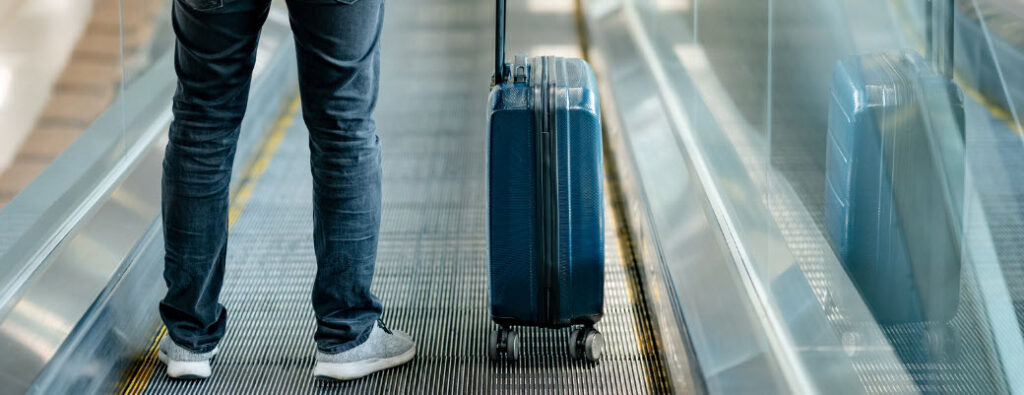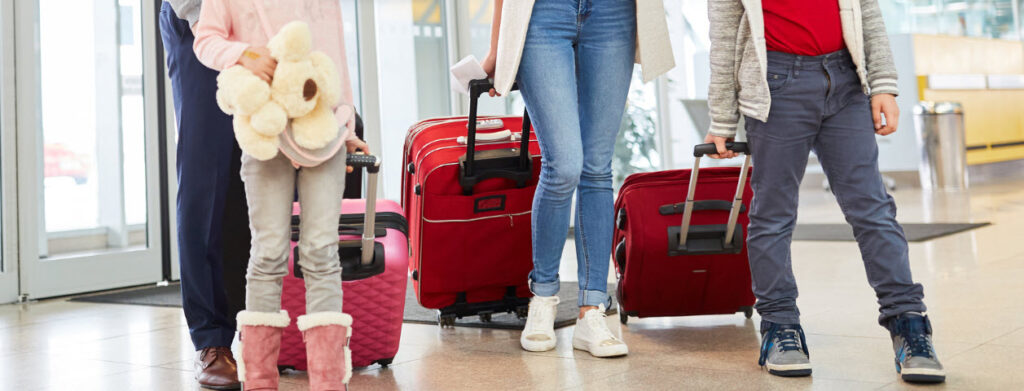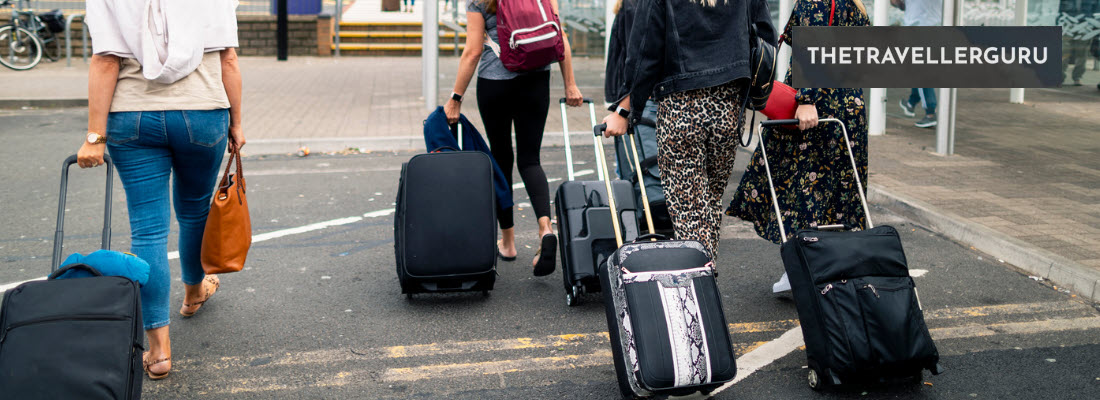Hey there my fellow travel enthusiasts and welcome to my post where we will discuss luggage size restrictions for airlines and how this can affect your travel needs. Air travel has become a popular mode of transportation for people all over the world. But with the increasing number of passengers, airlines have had to implement strict rules and regulations to ensure the safety and comfort of everyone on board. One such rule is the limitation on the size and weight of luggage that passengers can carry with them.
Each airline has its own set of rules regarding luggage size and weight, and it is important for passengers to be aware of these rules before they pack for their trip as failure to comply can result in additional fees or even the refusal to board the flight. So for those of you about to get yourself on a plane, let’s check out some of the base restrictions below.
General Luggage Sizes
First, let’s just make sure we are all on the same page in terms of luggage categorizations.
Carry-On Luggage
Carry-on luggage is the baggage that passengers can bring with them on the plane and store in the overhead compartment. Most airlines have specific size and weight restrictions for carry-on luggage. The size restrictions vary from airline to airline, but the general rule is that the carry-on luggage should fit in the overhead compartment or under the seat in front of the passenger.
Passengers should be aware of the size and weight restrictions of their airline before packing their bags. It is important to note that some airlines have stricter restrictions than others. For example, low-cost carriers may have smaller size and weight restrictions for carry-on luggage than full-service airlines.
Check out these: Hard Side Carry-On Cases

Checked Luggage
Checked luggage is the baggage that passengers check in at the airport and is stored in the cargo hold of the plane. Like carry-on luggage, most airlines have specific size and weight restrictions for checked luggage however the size and weight restrictions for checked luggage are generally more lenient than those for carry-on.
Passengers should be aware of the size and weight restrictions of their airline before packing their bags and it is especially important to note that airlines may charge additional fees for checked luggage that exceeds their size and weight restrictions.
General Luggage Size Restrictions for Airlines
Below is an outline of the general luggage restrictions for major airlines around the world. However, please use these as a guide only and always check with your carrier as you book your seat.
American Airlines
American Airlines allows passengers to bring one carry-on bag and one personal item – such as a small backpack, laptop bag, camera bag, briefcase or purse – on board. The maximum dimensions for carry-on bags are 22 x 14 x 9 inches (56 x 36 x 23 cm), including handles and wheels weighing up to up to 5.5 lbs/2.5 kgs. Personal items must fit under the seat in front of the passenger. The maximum dimensions for personal items are 18 x 14 x 8 inches (45 x 35 x 20 cm).
Check in luggage ranges depending on where you are flying but expect limitations around 62 in / 158cm weighing 50 lbs / 23 kgs. For First / Business, weight is 70 lbs / 32 kgs for complimentary bags.
Delta Airlines
Delta Airlines allows passengers to bring one carry-on bag and one personal item on board. The maximum dimensions for carry-on bags are 22 x 14 x 9 inches (56 x 36 x 23 cm), including handles and wheels. Personal items must fit under the seat in front of the passenger. The maximum dimensions for personal items are 18 x 14 x 8 inches (45 x 35 x 20 cm).
For check-in, Baggage size must not exceed 62 inches (158 cm) when you total length + width + height and usually not weigh more than 50 lbs / 23 kgs.
United Airlines
United Airlines allows passengers to bring one carry-on bag and one personal item on board. The maximum dimensions for carry-on bags are 22 x 14 x 9 inches (56 x 36 x 23 cm), including handles and wheels. Personal items must fit under the seat in front of the passenger. The maximum dimensions for personal items are 17 x 10 x 9 inches (43 x 25 x 22 cm).
Check in luggage should not exceed 62 in / 158cm weighing 50 lbs / 23 kgs for economy or premium economy. For First / Business, the weight limit increases to 70 lbs / 32 kgs per allowable bags.

Southwest Airlines
Southwest Airlines allows passengers to bring one carry-on bag and one personal item on board. The maximum dimensions for carry-on bags are 10 x 16 x 24 inches (25 x 40 x 60 cm), including handles and wheels. Personal items must fit under the seat in front of the passenger. The maximum dimensions for personal items are 18.5 x 8.5 x 13.5 inches (47 x 22 x 34 cm).
Each checked bag can weigh 50 pounds/23 kg or less and be 62 inches/158cm in size (length + width + height).
QANTAS Airways
QANTAS Airways allows passengers to bring one carry-on bag and one personal item on board. The maximum dimensions for carry-on bags are 22 x 14 x 9 inches (56 x 36 x 23 cm), including handles and wheels with a maximum wight of 10kg (14kg in total including personal items). Personal items must fit under the seat in front of the passenger. The maximum dimensions for personal items are 17 x 13 x 8 inches (43 x 33 x 20 cm).
Each checked bag can weigh 50 pounds/23 kg up to 70 lbs / 32 kgs depending on flight and member status and be no more than 62 inches/128cm in size (length + width + height).
British Airways
British Airways allows passengers to bring one carry-on bag and one personal item on board. The maximum dimensions for carry-on bags are 22 x 17 x 9.9 inches (56 x 45 x 25 cm), including handles and wheels with a maximum wight of 23kg. Personal items must fit under the seat in front of the passenger. The maximum dimensions for personal items are 17 x 13 x 8 inches (43 x 33 x 20 cm).
Each checked bag can weigh 50 pounds/23 kg up to 70 lbs / 32 kgs depending on flight and member status and be no more than 62 inches/128cm in size (length + width + height).
Emirates
Emirates allows passengers to bring one carry-on bag and one personal item on board for economy. The carry-on bag must be under 7 kg (15 lb) bag (10kg for premium economy) with dimensions of 55 x 38 x 20 cm (22 x 15 x 8 in). First and Business class also allow one briefcase; 45 x 35 x 20 cm (18 x 14 x 8 in), plus one handbag; 55 x 38 x 20 cm (22 x 15 x 8 in).
Each checked bag can weigh from 20kg/44lb up to 50 kgs/110lb (each bag cannot be more that 32kg/70lbs) depending on flight type and member status and be no more than 62 inches/128cm in size (length + width + height).
Factors Influencing Airline Luggage Size Restrictions
As we have mentioned, the above dimensions and weights are correct at time of writing and definitely subject to change. Other factors to consider here also include:
Flight Class
Flight class is a significant factor that influences luggage size restrictions. Passengers traveling in first or business class are usually allowed to carry more luggage than those traveling in economy class. Airlines typically allow first-class passengers to carry two to three pieces of luggage, each weighing up to 32 kg (70 lbs), while business class passengers are allowed to carry two pieces of luggage, each weighing up to 23 kg (50 lbs).
In contrast, economy class passengers are generally allowed to carry only one piece of luggage, weighing up to 23 kg (50 lbs).
International vs Domestic Flights
Luggage size restrictions may also vary depending on whether the flight is international or domestic. International flights usually have stricter luggage size restrictions than domestic flights as they have to comply with the luggage size restrictions of multiple countries, and these restrictions may differ from one country to another.
In contrast, domestic flights only have to comply with the luggage size restrictions of a single country.
Aircraft Type
The type of aircraft used for the flight is another factor that can influence luggage size restrictions. Smaller aircraft have less storage space, which means that passengers may be restricted to carrying smaller bags. Airlines may also have different luggage size restrictions for different types of aircraft. For example, a passenger traveling on a regional jet may be allowed to carry a smaller bag than a passenger traveling on a larger aircraft.

Effects of Non-Compliance
Airlines enforce luggage size restrictions to ensure safety, efficiency and convenience for all passengers. Non-compliance can cause delays, inconvenience and even safety hazards.
One of the most common effects of non-compliance is the need to check in oversized carry-on luggage. Airlines typically charge a fee for checked-in luggage and oversized luggage may incur an additional cost as well. This can result in added expenses that could have been avoided if the passenger had complied with the size restrictions.
In some cases, non-compliance can also result in the passenger being denied boarding altogether. If the luggage is too large to fit in the overhead compartments or under the seat, the passenger may be asked to check it in. However, if the passenger has already checked in the maximum number of bags allowed or the luggage is too heavy, they may not be able to board the flight.
Non-compliance can also cause delays for other passengers. If a passenger’s oversized luggage cannot fit in the overhead compartments, the flight attendants may have to spend extra time trying to find a place to store it. This can cause a delay in the boarding process and inconvenience other passengers who are waiting to board the flight.
Tips for Packing Efficiently
When it comes to packing for a flight, maximizing luggage space is key. Here are a few tips for packing efficiently:
- Roll clothes instead of folding them to save space and reduce wrinkles.
- Use packing cubes or compression bags to organize and compress clothing items.
- Pack versatile clothing items that can be mixed and matched to create multiple outfits.
- Wear heavier items, such as jackets or boots, on the plane to save space in your luggage.
- Consider packing travel-sized toiletries or purchasing them upon arrival to save space and comply with airline size restrictions.
- Check your airline’s baggage policy before packing to ensure compliance with size and weight restrictions.
By following these tips, travelers can pack efficiently and avoid the stress of overweight or oversized luggage at the airport.
Check out these: Packing Cubes for Travel
Conclusion
Overall, it is important for travelers to be aware of airline luggage size restrictions when flying with airlines. While each airline has its own specific rules and regulations, there are some general guidelines that can help passengers avoid any issues or additional fees.
By following these guidelines and being aware of the rules, passengers can help ensure a smooth and stress-free travel experience.
Let me know if this article was helpful, and as usual, let me know of your experiences here.
Also, please do not hesitate to comment below if you have any questions, concerns, or corrections or would like me to check anything else out for you.
Until next time.
Have fun
Paul






